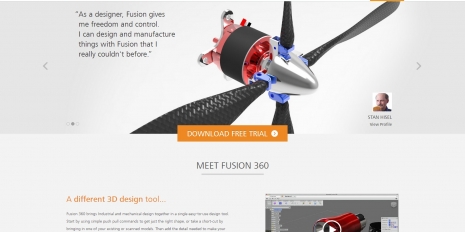
Over the course of 20 years using a myriad of tools to develop products, the toolset has not structurally changed since the mainstreaming of parametric modelling in the 90's. It has also not really changed that much on the other side with illustrative and image editing tools.
When I initially saw Fusion 360, it was late at night and I was trawling through a design Flipboard. It gave me the same 'ping' that I had when I saw Solidworks for the first time, after having used 2D CAD at design school (something that I dreaded using). After downloading a trial and trying a few basic things and exploring the wider tool and its connections with other Autodesk tools, my enthusiasm was retained.
Commercially, most mainstream tools are over-priced and have progressively turned into bloatware with too many versions. Tools that require an up-front investment of $10k +, with residual license fee of at least a third of this to keep 'in the system' each year, is not something that will succeed in the longer term and invites new challengers into the market.
Functionally, so much has changed in the way we work over the last 15 years and the static CAD modelling tools seem to have struggled to embrace the fluid and collaborative nature of development. Tools like Groove (now absorbed into MS offer), Evernote, Basecamp, and Trello, among others, provide a very easy entry point and are truly collaborative in nature. We have always aspired to build everyone into the development process (clients, collaborators, and partners).
Fusion 360 offers a change on quite a few different levels. It is offering a true subscription model where we pay a monthly charge on the user. They have combined a few modelling concepts and tools to create a hybrid of surface modelling and parametric modelling. The tool itself is at once a collaboration tool and a modelling developmental tool. Some of the exciting bits are being able to cloud render using their servers, and undertake analysis using the same. These two activities require a lot of computing resource and can tie up machines for some time.
So with this in mind, I decided to get this application embedded into a summer internship as the primary design tool. Simon Crane has now been using the tool for 4-5 months and we have had several sessions with the Fusion 360 team (who must be given credit for their willingness to engage with a design company at the bottom end of the Pacific). We have also rolled this into two commercial projects that are front-end research/ideation projects to establish how effective it is when we move into a truly multi-user environment.
Simon has written up a detailed review, and we are looking forward to seeing and hearing more about it as the tool develops. Read his review here.
Comments
Post new comment